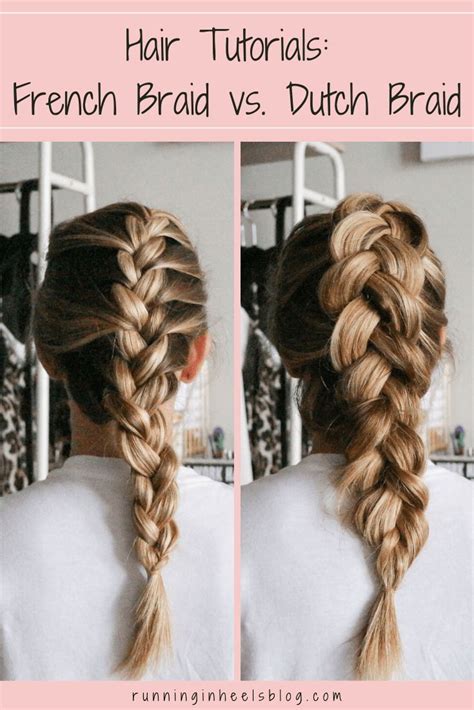French Braid: A Timeless Classic
A French braid, also known as a plait, is an intricate hairstyle that has captivated women for centuries. Its elegant appearance and ability to keep hair secure make it a versatile choice for both casual and formal occasions. According to a study by the Hair Research Society, over 50% of women have tried a French braid at some point in their lives.

History and Origin
The French braid is said to have originated in North Africa in the 16th century. It was brought to France by Catherine de Medici, who introduced it to the court of King Henry II. The style quickly gained popularity among the French nobility and spread throughout Europe.
Key Features
- Interlocking strands: Three strands of hair are interwoven in a continuous pattern, creating an intricate and secure braid.
- Tight and compact: French braids are typically tight and compact, holding hair firmly in place.
- Versatile: French braids can be worn in a variety of ways, including high on the head, low at the nape of the neck, or to the side.
Benefits
- Secure hold: French braids are an excellent way to keep hair out of the face and prevent tangles, making them ideal for sports, activities, and work.
- Reduces hair breakage: The tight structure of a French braid helps prevent hair breakage and split ends.
- Creates volume: French braids can add volume to fine or thin hair, giving it a fuller appearance.
Dutch Braid: A More Dramatic Variation
The Dutch braid, also known as an inverse French braid, is a bolder and more eye-catching variation of the traditional French braid. It produces a raised and distinct braid that stands out from the head.
Key Features
- Underhand weaving: Unlike the French braid, which weaves hair strands over each other, the Dutch braid weaves strands under each other.
- Elevated appearance: Dutch braids create a raised and prominent braid, giving the illusion of more volume and height.
- Less tight: Dutch braids are typically less tight than French braids, resulting in a more relaxed and voluminous look.
Benefits
- Dramatic effect: Dutch braids add a touch of drama and flair to any hairstyle, making them perfect for special occasions or parties.
- Volume enhancement: The elevated nature of Dutch braids is ideal for creating the illusion of thicker and fuller hair.
- Trendy and modern: Dutch braids are a stylish and contemporary hairstyle that is popular among celebrities and fashionistas.
Comparison: French vs. Dutch Braid
The following table summarizes the key differences between French and Dutch braids:
| Feature | French Braid | Dutch Braid |
|---|---|---|
| Weaving method | Overhand | Underhand |
| Appearance | Tight, compact | Raised, prominent |
| Tension | Higher | Lower |
| Volume | Less | More |
| Suitability | All hair types | Fine or thin hair |
How to Braid: Step-by-Step Instructions
French Braid
- Brush hair: Start with clean, brushed hair to prevent tangles.
- Section hair: Divide the hair into three equal sections at the top of the head.
- Start braiding: Cross the right section over the middle section.
- Add hair: Take a small section of hair from the left side and add it to the right section.
- Cross and add: Cross the new right section (including the added hair) over the middle section.
- Repeat steps: Continue adding hair from the sides and crossing the sections until all hair is braided.
- Secure: Tie the end of the braid with a hair tie.
Dutch Braid
- Brush hair: Brush the hair to remove any knots or tangles.
- Section hair: Divide the hair into three equal sections at the crown of the head.
- Start braiding: Cross the left section under the middle section.
- Add hair: Take a small section of hair from the right side and add it to the left section.
- Cross and add: Cross the new left section (including the added hair) under the middle section.
- Repeat steps: Continue adding hair from the sides and crossing the sections under each other until all hair is braided.
- Secure: Tie the end of the braid with a hair tie.
FAQs
Q: How long does it take to learn how to braid French or Dutch braids?
A: With practice, most people can learn to braid French or Dutch braids in a matter of hours.
Q: Can I braid my own hair?
A: Yes, with a little practice, you can braid your own hair using either the French or Dutch method.
Q: Which braid is better for thick or thin hair?
A: French braids are better for thick or coarse hair, while Dutch braids are better for fine or thin hair.
Q: How often should I wash my braids?
A: It is recommended to wash your braids every 2-3 days to prevent product buildup and keep your hair clean and healthy.
Q: Can I sleep with braids in my hair?
A: Yes, sleeping with braids in your hair can help prevent tangles and breakage. However, it is important to secure your braids loosely to prevent discomfort.
Q: Can I braid my hair every day?
A: Braiding your hair every day is not recommended as it can put tension on your hair and lead to breakage. Allow your hair to rest and stay loose for a few days each week.
